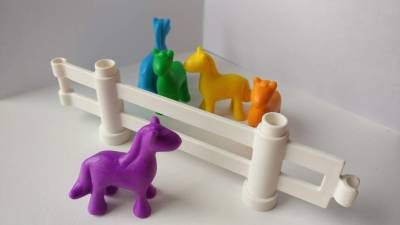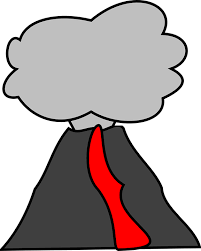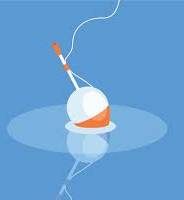WWF har ett material för att jobba med hållbar utveckling på förskola och dagis. Bland annat material för Earth Hour.
Materialet hittar du här: https://www.wwf.se/utbildning/larare/forskola/
Mötespunkt för pedagoger att dela naturvetenskapliga idéer
WWF har ett material för att jobba med hållbar utveckling på förskola och dagis. Bland annat material för Earth Hour.
Materialet hittar du här: https://www.wwf.se/utbildning/larare/forskola/
This exercise is a laboratory method of training how the numbers are built up, in this case number 5. Distribute one fence and five animals to each pair of children. Then have the children to think about how many different ways the animals can graze in Bosse the farmers’ two pastures.
If you want to extend the exercise you can have more pastures than two for the animals to graze in and have even more animals than five that are out grazing.
Material: Animals, fences (fences no need, two books can act as two different pastures)

Thank you Nina for the idea from the blog Räkna med mig.

 Volcanoes are always fascinating. Here are two variants.
Volcanoes are always fascinating. Here are two variants.
Form a volcano of clay. Pour a couple of spoons of baking soda into the crater. Drop in a few drops of caramel color. Take a spoon or pipette and drop in a few drops of vinegar in the baking soda. When the vinegar is dropped into the baking powder, it starts to mill and bubble. The mixture of vinegar and baking powder is poured over the edge of the crater and floats out over the sides of the volcano.
Explanation: The baking powder is a carbonate and consists of salts. All carbonates develop carbon dioxide if poured on an acid, such as vinegar. The carbonate reacts with the acid, which creates the bubbles.
Developments of the experiment
Pour baking soda into a bottle (preferably transparent). Place the bottle on a tray. Pour the vinegar into a glass, add some detergent and some caramel color. Stir the mixture. Put the funnel on the bottle and pour into the solution.
Explanation: The vinegar reacts with the baking powder to form carbon dioxide. The detergent will make huge bubbles of carbon dioxide. The bottle becomes full of foam, which eventually overflows!
 Vulkaner är alltid fascinerande. Här är två varianter.
Vulkaner är alltid fascinerande. Här är två varianter.
Forma en vulkan av leran. Häll ett par skedar bakpulver i kratern. Droppa i ett par droppar karamellfärg. Tag en sked eller pipett och droppa i ett par droppar vinäger eller ättika i bakpulvret. När vinägern/ättikan droppas i bakpulvret börjar det fräsa och bubbla. Blandningen av vinägern/ättikan och bakpulvret jäser över kanten på kratern och svämmar ut över vulkanens sidor.
Förklaring: Bakpulvret är en karbonat och består av salter. Alla karbonater utvecklar koldioxid om man häller på en syra, som ättika eller vinäger. Karbonatet reagerar med syran, vilket skapar bubblorna.
Utvecklingar av experimentet
Häll bakpulver i en flaska (helst genomskinlig). Ställ flaskan på en bricka. Häll i ättikan/vinägern i ett glas, tillsätt lite diskmedel och lite karamellfärg. Rör om i blandningen. Sätt tratten på flaskan och häll i lösningen.
Förklaring: Vinägern/ättikan reagerar med bakpulvret och bildar koldioxid. Diskmedlet gör att det blir rejäla bubblor av koldioxiden. Flaskan blir full med skum, som till slut svämmar över!
 There have been some experiments with floating here. I’ll give you one more. Then I have something else up my sleave.
There have been some experiments with floating here. I’ll give you one more. Then I have something else up my sleave.
Does everything flow in all kinds of fluids, or is it that some things can flow in water, but not in other liquids?
To try it, you can do the following experiment:
Measure out so it is equal amounts of water, oil and syrup, and pour them into the large jar, one liquid at a time. For the sake of effect, it may have a point to start with water, then oil and lastly the syrup. The liquids will layer.
Now it is time to choose an object and make a hypothesis: ”Will the chosen object float in the oil, in the water or in the syrup?”
MATERIAL
A large glass jar
Cooking oil
Water
Syrup
Various items: grapes, screws, rubber bands, erasers, piece of candle, plastic and metal clips, large sequins, cork, coins, thumbtacks, pearl, nails, magnets …
 Det har funnits några experiment med att flyta här. Jag ger er ett till. Sedan har jag lite annat i rockärmen.
Det har funnits några experiment med att flyta här. Jag ger er ett till. Sedan har jag lite annat i rockärmen.
Flyter allting i alla slags vätskor, eller är det så att vissa saker kan flyta i vatten, men inte i andra vätskor?
För att prova det kan ni göra följande experiment:
Mät upp så det är lika mängder vatten, olja och sirap, och häll ner dem i den stora burken, en vätska i taget. För effektens skull, kan det ha en poäng att börja med vatten, sedan olja och sist sirapen. Vätskorna kommer att skikta sig.
Nu är det dags att välja ett föremål och ställa en hypotes: ”Kommer det valda föremålet att flyta i oljan, i vattnet eller i sirapen?”
Peel a clementine or an orange. Light a candle and let it burn a little. Take a piece of the peel and squeeze the yellow on the peel against the flame of the heating light.
What can you see? Which fruit creates the most fireworks?
Explanation
It is not only air in an orange peel, but there are also oils in the peel that you use when, for example. makes perfume. When you squeeze the peel against the flame, you release the oils in the shell that are ignited by the flame.
The idea comes from Louise Alfredsson at Nätraby School in Nätraby via www.lektion.se
Skala en clementin eller en apelsin. Tänd ett värmeljus och låt det brinna lite. Ta en bit av skalet och kläm det gula på skalet mot lågan på värmeljuset.
Vad kan du se? Vilken frukt skapar mest fyrverkeri?
Förklaring
Det är inte enbart luft i ett apelsinskal utan det finns även oljor i skalet som man använder när man bl.a. gör parfym. När man klämmer skalet mot lågan så frigör man oljorna i skalet som antänds av lågan.
Idén kommer från Louise Alfredsson på Nätrabyskolan i Nätraby via www.lektion.se